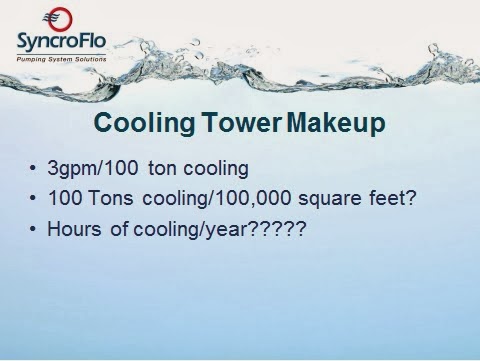One of the most common questions I hear are wondering whether rainwater harvesting will pay for itself? The short answer is yes, when engineered with that primary goal, and operated properly.
Why do we need to clarify that ROI is our primary goal? Because when ROI is your primary goal, the following are NOT:
- Capturing all, or close to all the rainwater. In many situations, the tanks are sized to collect the first inch of water that hits the roof. That's fine, but what if we don't NEED that much water?
- Capturing enough rainwater to eliminate potable water used for nonpotable needs, 100% of the time. Or 99%. Or even 95%. In America, we have an ample supply of water available as backup. Often, that water is even at the right PRESSURE.
- Over treating the water for the application. Either too much treatment, or more treatment capacity (meaning gpm) than necessary.
Looking at the cost for a small system, we'll first look at the most cost-effective uses for rainwater, which is for cooling tower makeup or irrigation. In those two applications typically very little water treatment is required. In the case of cooling tower makeup, it's likely that the water already in the cooling tower is dirtier than the rainwater.
Let's look at the cost for cooling tower make up on a typical building. In the example shown we have a filter that costs about $2000 on the inlet to the tank. The tank itself costs about $20,000 and then the pumping for either irrigation or cooling tower make up about $5000 or $7000. Total: 27,000 for an irrigation system.
The energy cost to pump the water to about 50 psi 6 hours per week for 40 weeks a year comes to about $85 per year at current rates. We estimated a 5 percent energy cost increase per year.
The water saved looking is about 500,000 gallons of water saved per year at a cost of 1.24 cents per gallon comes to about $6200 per year. We projected increases of 8% per year.
This example is based on Northern Virginia where we could find the energy cost, water cost, and impact fees.
Stormwater management fees are calculated differently in different areas. One popular model is to estimate an average amount of impervious surface of a residence, and charge a certain amount for that "block" of impervious surface. Businesses are charged for the number of blocks. In this example, and another popular method, is to charge based on assessed value. We estimated a $5,000,000 value for the building, and the current charge is 22.441 cents/$1000 assessed value. $1122 per year today, and we estimated an 8% annual increase.
Running through the numbers for this example, we come up with about a 22% annual rate of return, or about 4x the rate of return for the stock market.
Why such an attractive ROI? DURABILITY. These are not light bulbs that fail in 2-3 years. Consider: the WARRANTY on a tank from Georgia Water Tanks is 20 years, including labor. Pumps typically last 10 - 20 years when sized correctly. Controls "never" fail, especially modern controls that have fewer mechanical switches. We conservatively estimated the total life at 20 years, and included $1000/year in maintenance parts and labor.
To summarize: the most important strategies for cost-effective rainwater harvesting.
- Cooling tower makeup and spray irrigation.
- Above-ground tank.
- Prefilter before tank. No other filtration.
- Full-sized standby water connection, which bypasses the rainwater pump.
Used effectively, rainwater harvesting with products from GEORGIA WATER TANKS can be a sound financial investment, in addition to helping conserve the world's second-most precious resource.









.JPG)












